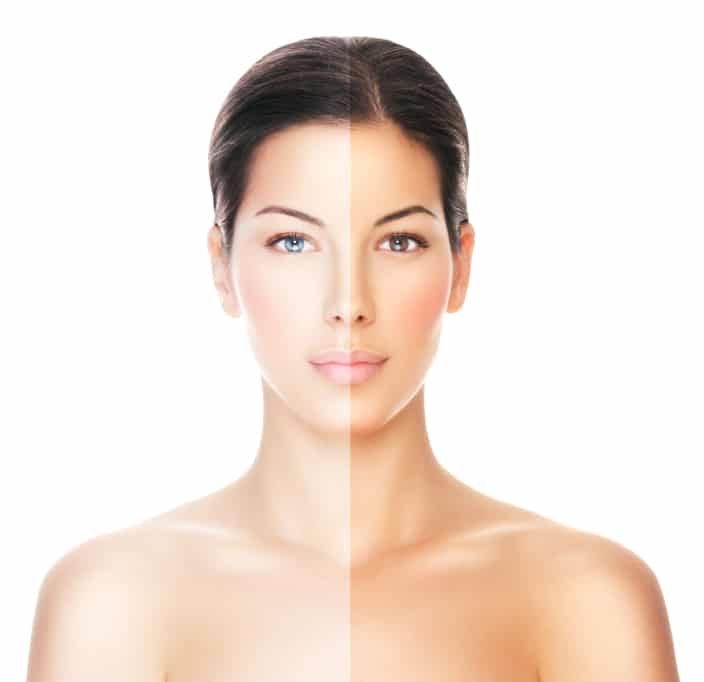Self-tanning products

DHA is a colourless sugar derived from glycerine, which also occurs naturally in the human body. DHA reacts with free amino acids and proteins in the cells of the skin.
This reaction produces brown pigments called melanoids, which make the skin look tanned. This process begins immediately after application. The result becomes visible within one to three hours, depending on the skin type. The tint achieved in this way is lightfast and lasts between three and five days.
Another self-tanning ingredient is erythrulose, also a sugar that is biotechnologically obtained. Erythrulose is chemically more stable than DHA. Therefore, the tanning process is slower. The tan therefore does not set in within hours, but after one to two days.
Self-tanning lotions: temporary tanning effect
The skin is constantly renewed through cell division. Old skin cells come off and with them the colour. This is why the tan gradually disappears. After about ten days, the skin is completely discoloured again and “sun tanning” has to be repeated.
This application of self-tanning products is harmless. The entire tanning process with DHA or erythrulose does not interfere with living skin cells; the cells of the horny layer already no longer have a cell nucleus.
Even long-term effects are not to be feared according to current knowledge. In contrast to natural skin tanning by melanin, however, the tan produced by self-tanning agents does not protect against UV rays. It is still necessary to apply a UV filter when sunbathing.
Peeling helps to achieve an even tan
If you want to get a “streak-free” tan, you should perform a body peeling 24 hours before applying a self-tanning product. This removes loose skin cells and makes the skin layer even. It is also advisable to treat very dry areas of skin with a moisturiser beforehand, otherwise the DHA will penetrate deeper in these areas and the tan will become blotchy. To tan the face evenly, the pores should be closed as much as possible. This is done by cold: simply pass an ice cube over the facial skin shortly before the treatment and the pores will contract.
Self-tanning lotion: making the most of its shelf life
A disadvantage of DHA in cosmetic preparations is that the dihydroxyacetone decomposes over time. The degradation products of dihydroxyacetone, such as hydroxylmethylglyoxal, formaldehyde, glycolic acid, formic acid, acetic acid or pyruvic acid, turn the product brown and cause the pH value to drop below 3.0. In addition, the cosmetic formulation may have a pungent, unpleasant odour. This intensely perceived odour of the DHA degradation products usually causes consumers to stop using the cosmetic. Therefore, products with self-tanning active ingredients have a best-before date and require more elaborate formulation and storage strategies.
The goal in formulation development of self-tanning products is therefore to delay the degradation process and to conceal the resulting side odours – we can help you with this!
Read more about the topic here :
Literature:
Sun Y, Lee S, Lin L.ACS Omega. 2022 Dec 1;7(49):45510-45517
Munt DJ, Grana A, Hulce M, Fusaro RM, Dash AK.AAPS PharmSciTech. 2015 Dec;16(6):1425-33
